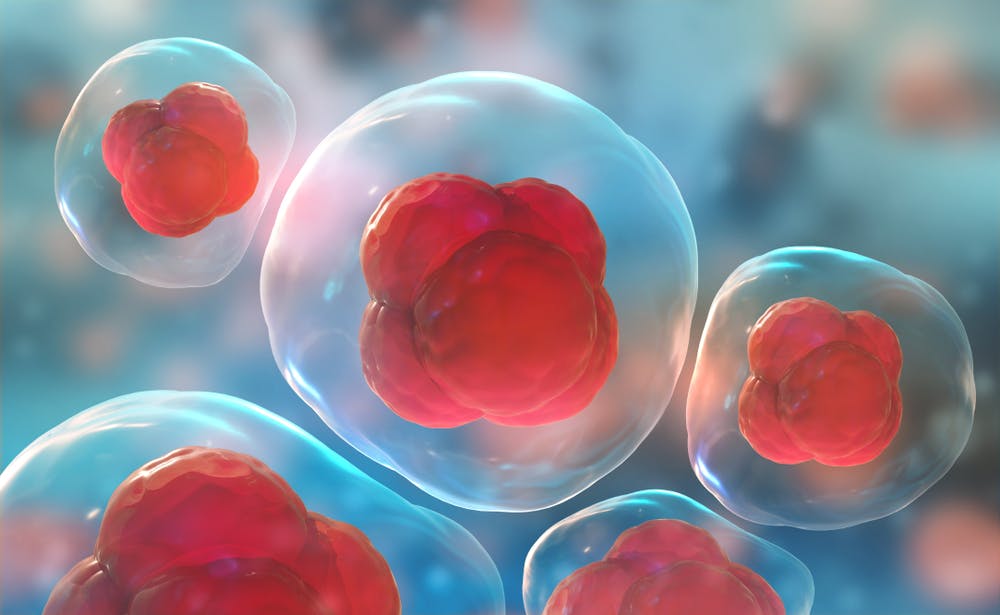The birth of the first "test-tube baby," Louise Brown, first gave hope to couples with infertility more than 40 years ago. Now, in vitro fertilization (IVF) is a routine procedure, but people who do not produce sperm or eggs still have no path to parenthood that results in a biological child.
However, that may soon change, thanks to research surrounding the possibilities of embryonic stem cells for replicating eggs and sperm.
The History of Stem Cell Research in Brief
In 1998, James Thomson and his fellow researchers published a paper in Science about their work identifying and growing human embryonic stem cells. As the first to accomplish such a feat, they hoped to eventually use stem cells to treat a variety of conditions.
The first big breakthrough using stem cells for reproductive medicine was made in 2007, when Japanese biologists Shinya Yamanaka and Kazutoshi Takahashi discovered that human skin cells can be turned into stem cells and developed into every type of tissue in the human body — including, in theory, eggs and sperm.
By adding four specific transcription factors (proteins that control the rate of transcription of genetic information) the researchers found that skin cells can be "tricked" into becoming embryonic stem cells. These stem cells can be transformed into primordial germ cells, which have not undergone meiosis and cannot be fertilized.
In 2012, researchers successfully developed mouse primordial germ cells into mature eggs. Then, in 2017, they fertilized these mature eggs using IVF, collected the embryonic stem cells, and repeated the process of creating primordial germ cells for a new cycle.
But what about sperm? In 2011, researchers used the same strategy to develop mouse skin cells into embryonic stem cells and, eventually, sperm cells that fertilized mouse eggs and became healthy mouse pups.
Recent Embryonic Stem Cell Discoveries
Repeating this process for humans is a bit more complicated, but the latest discoveries are promising. In 2018, researchers successfully transformed human blood cells into embryonic stem cells, and then into immature egg cells that cannot be fertilized. The key to this breakthrough was putting the human embryonic stem cells into ovaries created in the lab using mouse embryonic stem cells.
Research surrounding male factor infertility has also experienced a leap forward. In 2019, when using single-cell RNA sequencing to better understand how sperm form, researchers developed a way to isolate spermatogonial stem cells. This breakthrough means transplanting spermatogonial stem cells may soon be on the horizon.
Scientists also discovered the function of the metabolic enzyme adenosylhomocysteinase (AHCY). Understanding how AHCY activates genes in embryonic stem cells and controls embryonic stem cell division speed could lead to better ways to diagnose and even predict human infertility.
Additionally, researchers from the Hebrew University-Hadassah Medical School developed human skin cells into the specific cell types that comprise early-stage embryos using five specific transcription factors. Scientists at Rockefeller University in New York recently took this concept one step further: using human embryonic stem cells, they developed the first three-dimensional living models of human embryos.
The Potential of Stem Cells in Fertility Innovation
Because embryo development happens within the uterus, the inability to study it has frustrated scientists for decades. With these stem cell discoveries, a better understanding of human development, and perhaps even new ways to treat infertility and prevent miscarriages, now seems within reach.
Researchers are inching closer to creating fully functional human embryos from human skin cells without the need for human eggs or sperm. For couples and individuals who desire a genetic connection to their child but don't yet have the option, this would be a dream come true.


